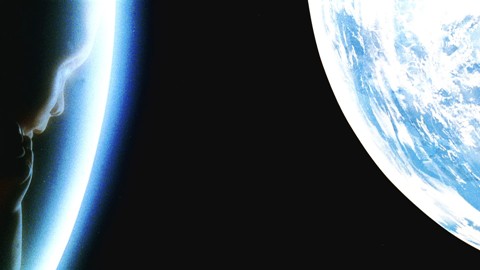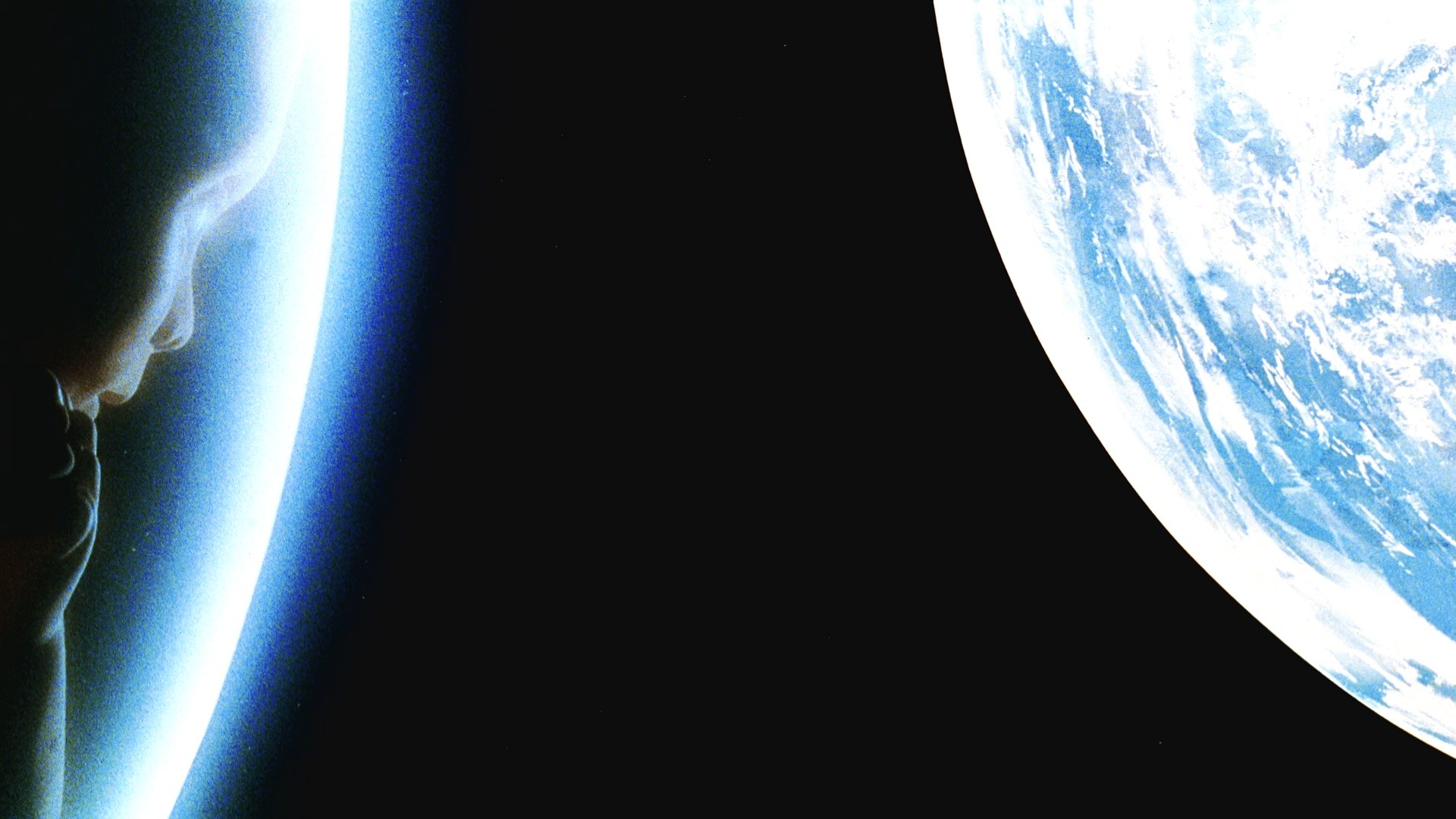File:Trumbull vfx master.jpg: Difference between revisions
Siterunner (talk | contribs) No edit summary |
Siterunner (talk | contribs) No edit summary |
||
| Line 1: | Line 1: | ||
'''"Starchild"''' | |||
From 2001, the Movie: | From 2001, the Movie: | ||
Douglas Trumbull recalls the making of the Starchild, again from Cinefex: | |||
"(Stanley) shot it through about fifteen layers of a special gauze, with about 40,000 watts of backlight - something like 4 big arc lights to rim-light it, and got this tremendous, overexposed glowing effect. This particular gauze - actually very rare, lady stockings from pre-war Europe - created a beautiful softening of the light, without making it unsharp. If you use a fog filter it makes the image unsharp because it's actually a piece of glass with diffusion on it. But with gauze, part of the camera lens is seeing right through it, without interruption, so it tends to scatter the light without really stopping it from being sharp. Stanley filmed a number of different moves on the Starchild - shots of it entering frame and sliding through frame and so on. Then I airbrushed the envelope that surrounded it onto a piece of glossy black paper, which was photographed on the animation stand and matched in movement to the model, also with a lot of gauze and overexposure." | |||
The ten seconds of the shot were actually made with eight hours of exposure: to achieve the effect of large depth of field and sharpness of the image the scene was filmed in stop-motion , three frames per second. The glowing effect was therefore obtained because of the long exposure time of each frame, so that the backlight seemed to penetrate into the sculpture (by Liz Moore). | |||
[[File:2001 pic2.jpeg]] | [[File:2001 pic2.jpeg]] | ||
[[File:2001 pic1.jpeg]] | |||
Revision as of 13:41, 21 July 2016
"Starchild"
From 2001, the Movie:
Douglas Trumbull recalls the making of the Starchild, again from Cinefex:
"(Stanley) shot it through about fifteen layers of a special gauze, with about 40,000 watts of backlight - something like 4 big arc lights to rim-light it, and got this tremendous, overexposed glowing effect. This particular gauze - actually very rare, lady stockings from pre-war Europe - created a beautiful softening of the light, without making it unsharp. If you use a fog filter it makes the image unsharp because it's actually a piece of glass with diffusion on it. But with gauze, part of the camera lens is seeing right through it, without interruption, so it tends to scatter the light without really stopping it from being sharp. Stanley filmed a number of different moves on the Starchild - shots of it entering frame and sliding through frame and so on. Then I airbrushed the envelope that surrounded it onto a piece of glossy black paper, which was photographed on the animation stand and matched in movement to the model, also with a lot of gauze and overexposure."
The ten seconds of the shot were actually made with eight hours of exposure: to achieve the effect of large depth of field and sharpness of the image the scene was filmed in stop-motion , three frames per second. The glowing effect was therefore obtained because of the long exposure time of each frame, so that the backlight seemed to penetrate into the sculpture (by Liz Moore).
File history
Click on a date/time to view the file as it appeared at that time.
| Date/Time | Thumbnail | Dimensions | User | Comment | |
|---|---|---|---|---|---|
| current | 15:50, 29 May 2015 |  | 575 × 323 (19 KB) | Siterunner (talk | contribs) | Category:Green Graphics |
You cannot overwrite this file.
File usage
The following 3 pages use this file:

